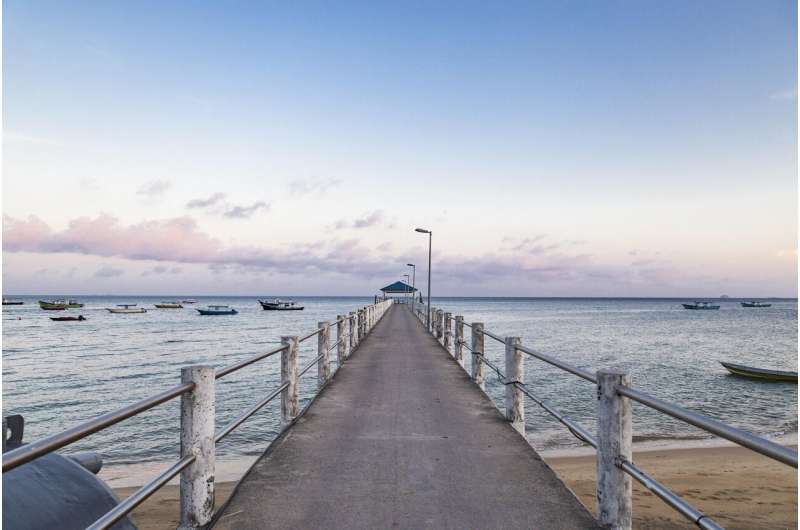This article has been reviewed according to Science X's editorial process and policies. Editors have highlighted the following attributes while ensuring the content's credibility:
fact-checked
reputable news agency
proofread
Dunes and native plants to sprout next year on a California's harbor beach

A relatively low-budget project has received a $57,000 state grant to restore sand dunes and native plants next year to spots along Oceanside's North Strand and Harbor Beach.
Protected from erosion by a long jetty and replenished by annual harbor dredging, the beach is probably Oceanside's widest, about 500 feet from the harbor parking lot to the water.
"The primary purpose of the Oceanside Coastal Dune Restoration Project is to deploy a nature-based solution to elevate the back beach (away from the waves) and retain sand in areas along the city's coast where sandy resources persist, with the additional benefit of restoring rare, native coastal dune habitat," states a staff report.
Rincon Consultants, a statewide firm with an office in Carlsbad, received a $15,519 contract in March this year to develop preliminary plans. The Oceanside City Council is expected to accept a $56,876 grant Wednesday from the U.S. Fish and Wildlife Service that will allow Rincon to complete the project at a total cost of up to $84,501.
The dunes are expected to be built in the early fall of 2024, said Jayme Timberlake, Oceanside's coastal zone administrator. The contract includes monitoring and maintenance through September 2028 and could be extended.
"The dunes at Harbor Beach will be ... in areas that are not occupied by beachgoers due to the width of (the beach) and proximity of the ocean," Timberlake said in an email. In all, the dunes will cover about 1 acre.
"Along North Strand, the dunes will be relatively small (0.05 -0.10 acre) and will be situated along the back beach and traversable through designated paths," she said. "Access is not expected to change except the public will have to walk around the small dunes or through designated paths."
Design details and the exact locations are yet to be determined, but the dunes will be created in areas not subject to waves and tides.
Areas being considered are near Robert's Cottages along The Strand, along the pedestrian path from the south jetty parking lot, and in front of the gazebo at the northern end of Harbor Beach.
Winds in the area blow almost constantly eastward from the sea, leaving sand on roads, parking lots, sidewalks and bikeways, where it is removed by the city's public works crews.
Four-foot-tall, slotted fencing and 12-inch cedar slats, which are like stakes, will be used temporarily to capture and hold the wind-blown sand on the beach until the plants becomes established. The dunes are expected to grow no more than 4 feet tall.
"Once restored, coastal dunes will sustain vegetation year-round and will widen over time," the staff report states. "Native vegetation will persist on the dunes, which will flower at various seasons throughout the year."
Similar fences were installed at Cardiff State Beach in Encinitas as part of the Living Shoreline Project completed in 2019.
Oceanside's dune project is separate from but related to, the city's larger Re:Beach project, in which international design firms are competing for a contract to replenish and retain sand on the badly eroded beaches south of the city's pier.
The City Council could choose a preferred contractor for that effort early next year, though so far, no money is available for construction. Costs have been estimated at $50 million or more.
Dunes are a low-cost, nature-based solution that can be implemented quickly in areas where there's enough space and sand for them to work.
"This is considered a pilot project to determine how dunes will develop in areas of Oceanside that sustain sand," Timberlake said. "After the Re:Beach design gets chosen, dunes may be part of the design solution, and this dune restoration pilot project could help inform the associated design."
Sand dunes are a natural defense against storms, beach erosion, and possibly sea-level rise by dissipating wave energy and creating a barrier between the ocean and the built environment. They increase biodiversity and provide a home for rare native species of plants and wildlife.
Very few coastal dunes with native plants remain in San Diego County. Most have been covered by highways, homes, sidewalks, and other structures.
2023 The San Diego Union-Tribune.
Distributed by Tribune Content Agency, LLC.




















